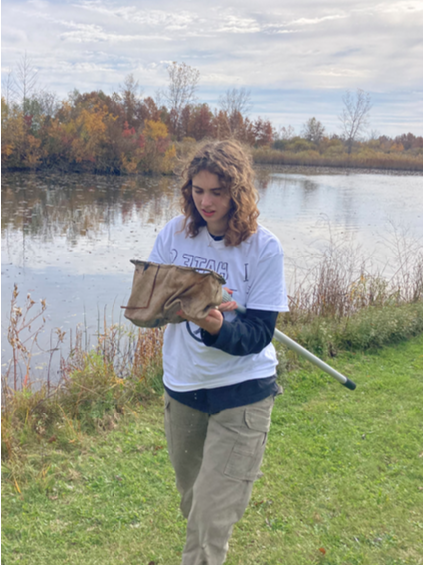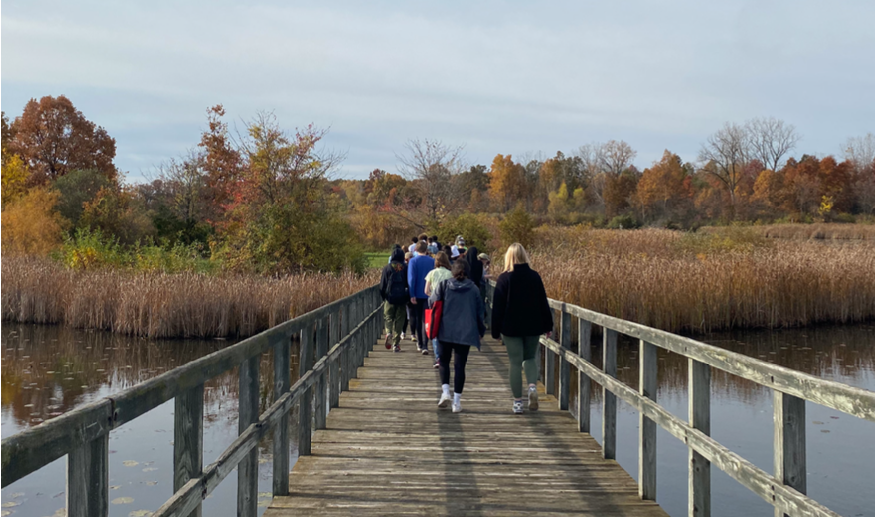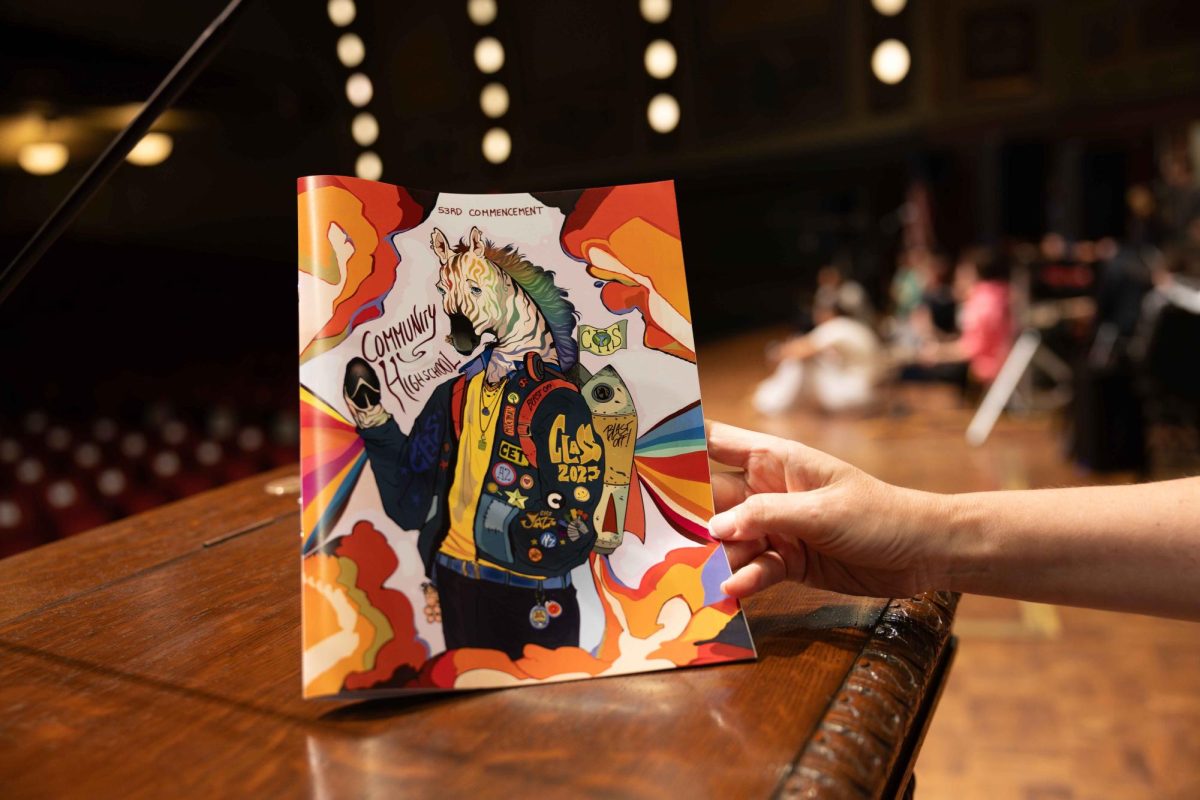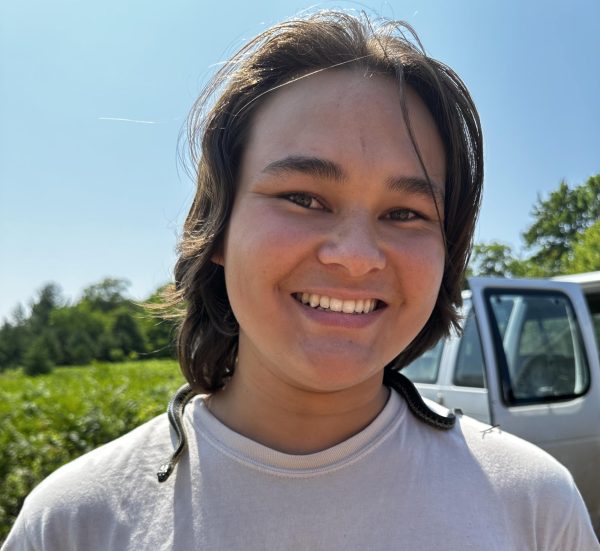They finally spotted it. High in a tree across the water, a bald eagle was perched. The CHS Ecology class was ecstatic.
“It felt so patriotic,” Mo Arendall said.
The Ecology students hurried to take photos. In the years that Courtney Kiley’s Ecology class visited Crosswinds Marsh, an eagle had been spotted all but two times. The class had nearly missed it, but even from far away its white head and large brown body were unmistakable.
With the sun out, it was the perfect weather for the Ecology class’s third field trip in three weeks. The trip was part of the Ecosystems and Forests unit, with a focus on identifying local trees and how they interact with their ecosystems.
Kiley treasures outdoor learning, feeling that it’s a great way to learn about science. In the previous weeks, the class had learned all about trees in Ann Arbor through the classroom, and then through a guided tour of the Arb, a notable area for its diversity and proximity to humans, as large, natural areas are rare in urban environments.

Anya Knoepp was glad for the chance to actually learn about life in the Arb. Though she’s visited it before, she was able to learn more about the diversity of the area and how the land is managed.
“I feel like when you go there recreationally, you don’t really pay attention to that stuff,” Knoepp said.
Toward the end of their ecosystems and forests unit, the Ecology class visited Crosswinds Marsh, an expansive wetland teem.
Students finish their hike around Crosswinds Marsh. Courtney Kiley took the trip many years, feeling it better lets students understand what goes into ecosystems. “Crosswinds Marsh is really interesting because it was created by humans and is a successful wetland,” Kiley said. “Learning about a human created ecosystem and seeing if it’s healthy, and thinking about what goes into making that sort of ecosystem is important.”
ing with wildlife and plants. The class’s hike through the marsh took them over tiny islands and through forests. They were able to utilize their knowledge of local life and trees to better understand the region.
For Knoepp, the highlight wasn’t the hike through the wetland or the eagle sighting, but rather something they should have done during their freshman year three years ago: benthic insect identification.
“Seeing students collect benthic insects and knowing that they didn’t get to do that during freshman year because we were online, and seeing how giddy people were to find a water scorpion or dragonfly larva was really fun,” Kiley said.
Arendall and Knoepp were both excited to finally collect benthic insects. Knoepp liked it because she feels insects are overlooked and enjoys learning about them; Arendall was excited for the opportunity to collect insects after missing his chance three years ago.
Finally having the opportunity to complete the activity from the very first unit of FOS I rounded out the class’s third field trip. True to Kiley’s ideals of learning in nature, the Ecology class had an eventful few weeks during their ecosystems and forests unit.










